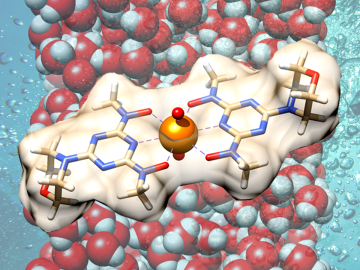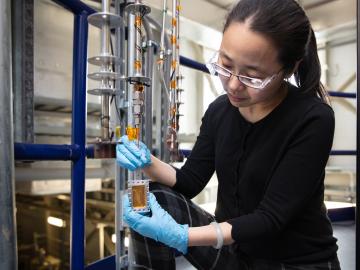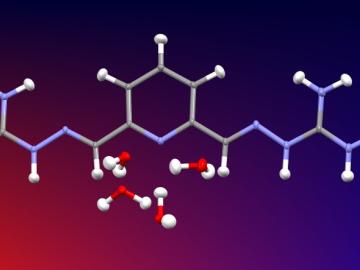
Filter News
Area of Research
- (-) Materials (45)
- Advanced Manufacturing (4)
- Biological Systems (1)
- Biology and Environment (22)
- Computational Biology (2)
- Computational Engineering (1)
- Computer Science (2)
- Electricity and Smart Grid (2)
- Energy Science (43)
- Fusion and Fission (18)
- Fusion Energy (9)
- Isotopes (9)
- Materials for Computing (6)
- Mathematics (1)
- National Security (10)
- Neutron Science (79)
- Nuclear Science and Technology (30)
- Nuclear Systems Modeling, Simulation and Validation (1)
- Quantum information Science (3)
- Sensors and Controls (1)
- Supercomputing (36)
News Type
News Topics
- (-) Biomedical (4)
- (-) Grid (2)
- (-) Mathematics (1)
- (-) Microscopy (12)
- (-) Molten Salt (1)
- (-) Neutron Science (13)
- (-) Nuclear Energy (12)
- (-) Quantum Computing (2)
- (-) Space Exploration (2)
- 3-D Printing/Advanced Manufacturing (10)
- Advanced Reactors (2)
- Artificial Intelligence (4)
- Big Data (2)
- Bioenergy (3)
- Buildings (2)
- Chemical Sciences (11)
- Clean Water (3)
- Composites (6)
- Computer Science (9)
- Coronavirus (2)
- Critical Materials (5)
- Cybersecurity (1)
- Energy Storage (13)
- Environment (7)
- Exascale Computing (1)
- Fusion (4)
- High-Performance Computing (1)
- Isotopes (8)
- Machine Learning (2)
- Materials (31)
- Materials Science (36)
- Nanotechnology (16)
- Partnerships (3)
- Physics (12)
- Polymers (10)
- Quantum Science (1)
- Security (1)
- Summit (1)
- Transportation (10)
Media Contacts

Scientists have discovered a way to alter heat transport in thermoelectric materials, a finding that may ultimately improve energy efficiency as the materials

Scientists have demonstrated a new bio-inspired material for an eco-friendly and cost-effective approach to recovering uranium from seawater.

Researchers at the Department of Energy’s Oak Ridge National Laboratory, Pacific Northwest National Laboratory and Washington State University teamed up to investigate the complex dynamics of low-water liquids that challenge nuclear waste processing at federal cleanup sites.

Researchers used neutron scattering at Oak Ridge National Laboratory’s Spallation Neutron Source to investigate the effectiveness of a novel crystallization method to capture carbon dioxide directly from the air.

Scientists have tested a novel heat-shielding graphite foam, originally created at Oak Ridge National Laboratory, at Germany’s Wendelstein 7-X stellarator with promising results for use in plasma-facing components of fusion reactors.

Oak Ridge National Laboratory scientists analyzed more than 50 years of data showing puzzlingly inconsistent trends about corrosion of structural alloys in molten salts and found one factor mattered most—salt purity.

Oak Ridge National Laboratory scientists studying fuel cells as a potential alternative to internal combustion engines used sophisticated electron microscopy to investigate the benefits of replacing high-cost platinum with a lower cost, carbon-nitrogen-manganese-based catalyst.

An Oak Ridge National Laboratory-led team used a scanning transmission electron microscope to selectively position single atoms below a crystal’s surface for the first time.

A new microscopy technique developed at the University of Illinois at Chicago allows researchers to visualize liquids at the nanoscale level — about 10 times more resolution than with traditional transmission electron microscopy — for the first time. By trapping minute amounts of...

Oak Ridge National Laboratory scientists have developed a crucial component for a new kind of low-cost stationary battery system utilizing common materials and designed for grid-scale electricity storage. Large, economical electricity storage systems can benefit the nation’s grid ...


